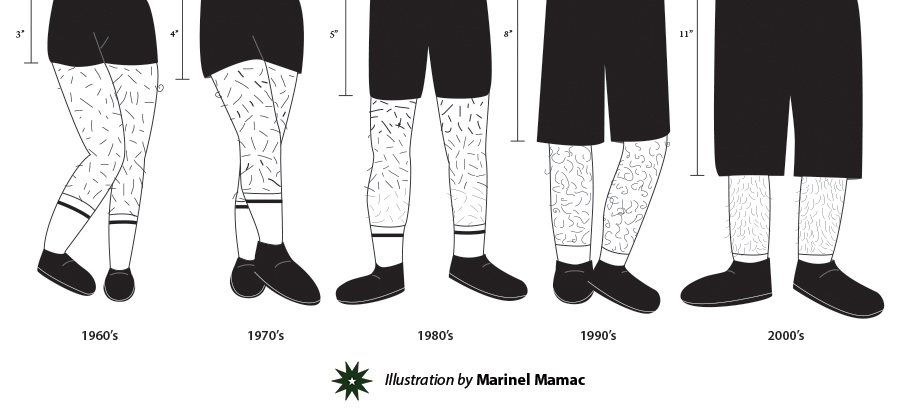Of the many schools and universities in the country, La Salle boasts a rich legacy in the realm of sports, and more so, in the realm of the Pinoy fan-favorite basketball. A founding member of the NCAA in 1924, La Salle developed its basketball program to become one of the finest in the country. And consequently, Green Archers of different eras witnessed the changes that occurred in basketball through the years.
One of the remarkable and striking changes in basketball is the evolution of the basketball uniform, that is, the lengthening of the athletic shorts. Gone were the days when cagers wore shorts as short and tight as that of the Lady Spikers’ jerseys. Back in the days when Larry Bird ruled the NBA stat sheets, shorts were too short that if you wear one today in DLSU, DO officers will definitely run after you for violating the dress code.
Circa 1960s (and prior)
Kurt Bachmann, Leo Prieto, and Ramoncito Campos are just few of the legendary basketball players who suited up for the Green Archers during this era. And if it was fortunate or unfortunate for them and their teammates back then, they sported athletic shorts with only three inches inseam. But given that air conditioners were not yet common for basketball arenas and gymnasiums of that time, perhaps baring too much skin was not that uncomfortable after all.
Circa 1970s
Before La Salle had a Joseph Yeo or a TY Tang or a Jeron Teng, the Green Archers first had Lim Eng Beng during their glory days with the NCAA. During this decade, tailors of sportswear were kind enough to add an inch to the inseam of the basketball shorts, making the inseam four inches. (But this length will still land you to the DO if you wear it to school today.)
Going back to Mr. Lim Eng Beng, it seems like the short length didn’t bother him anyway. Posting an NCAA All-time Best Scoring Average of 32 points per game and an NCAA all-time most points scored in a single game of 55 points, no NCAA basketball player with longer shorts has yet to keep up with his record.
Circa 1980s
Aside from the length of the inseam of the basketball shorts increasing from four inches to five inches, it is also during this era when La Salle made one of the biggest changes in their athletic programs yet. DLSU fled the NCAA, the glamour league of that time, due to excessive violence. La Salle then turned to UAAP as its new mother league, and the rest was history as the UAAP emerged to be the country’s premier collegiate league that it is today.
This era also saw the discovery of talents such as Jun Limpot, Franz Pumaren, Jong Uichico, and Gee Abanilla, who were former Green Archers that became brilliant coaches of the game.
Circa 1990s
Ren Ren Ritualo, Don Allado, Mark Telan, Dino Aldeguer, Juno Sauler, and Ty Bautista are just some of the notable Green Archers of the 1990’s. This era saw the emergence of La Salle as a basketball powerhouse of the UAAP as the Green Archers never fell below third place in the UAAP during this decade. In fact, the 1998 and the 1999 season marked the first two championships of La Salle’s historic four-peat.
Thanks to Michael Jordan’s special request to the Chicago Bulls, basketball shorts during this era saw an eight-inch inseam, enough to actually cover the thighs.
Circa 2000s
Mac Cardona, Mike Cortez, JVee Casio, and Joseph Yeo. These names are synonymous to the revered Green Archers team of the 2000’s. And although this era was filled with complications and a suspension on DLSU, La Salle still managed to bag three UAAP men’s basketball titles during the decade, excluding the forfeited Season 67 championship.
Amidst all the drama and controversies within the UAAP, basketball uniform became longer than ever, and Filipinos being the basketball-lovers that we are, definitely caught up with the trend. Perhaps it was fashion to blame for the long and baggy basketball shorts of the 2000s. With an inseam length of 11 inches, if these so-called shorts will grow a little longer, they will no longer be shorts.

